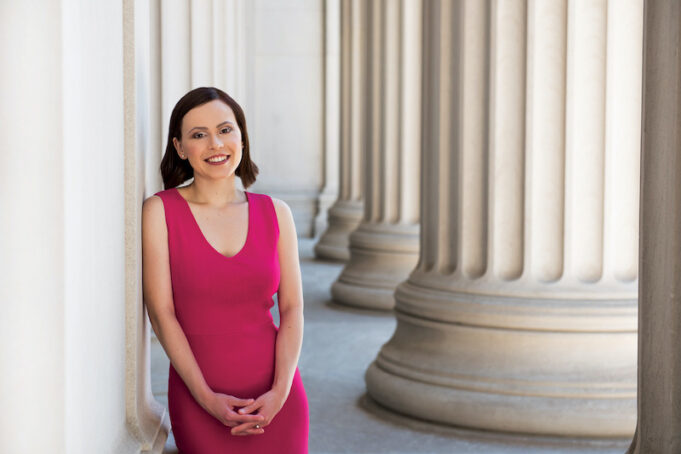A model approach to public health

SCHWHEN MARIE-LAURE CHARPIGNON STARTED HER PHD at the MIT Institute for Data, Systems, and Society (IDSS) in 2018, she never imagined that a year and a half later, the very same data-science skills she was developing would be needed to tackle one of the biggest public-health problems of this century: Covid-19. Yet Charpignon suddenly found herself consumed by Covid-19 research, often working late into the night to model the pandemic’s deadly spread.
Charpignon’s research took this unexpected turn in early 2020 as Covid-19 hit the United States. Her mentor, Maimuna Majumder SM ’15, PhD ’18, invited her to join the newly formed Covid-19 Dispersed Volunteer Research Network, a broad-based effort to put scientists to work fighting the pandemic. Since then, Charpignon has been working with others to model the spread of Covid-19 within different states.
To estimate how quickly the virus is likely to propagate, the model incorporates information on current public health restrictions, the distribution of families, demographics on age and preexisting conditions, and patterns of contact. Researchers can then adjust model inputs to predict how different public-health policies may affect the spread. For example, the model showed that in Georgia, Florida, and Mississippi, implementing initial quarantine lockdowns a week and a half earlier would have saved hundreds of lives—and continuing those lockdowns for several weeks longer could have saved thousands.
Charpignon says the goal is not only to understand spreading dynamics but also to forecast undocumented Covid-19 cases, which can inform vaccine purchase and distribution. “It’s really like resource planning,” she says. “Once you have an estimate, you can start your resource budgeting.”
Until a two-year stint at Microsoft Education, where she saw firsthand how schools struggle to address health issues such as nutrition and disease prevention, Charpignon never considered the intersection between data science and public health. It was clear to her then that public health was a field that needed more research. The experience solidified her next step: pursuing a PhD at IDSS, which focuses on applying advanced analytical tools to complex societal challenges. “IDSS is very interdisciplinary,” she says. “I think this is the future.”
Alzheimer’s research
At IDSS, Charpignon uses computational tools to explore large-scale questions in public health with a focus on nontraditional data sources. Her main project centers on drug repurposing for Alzheimer’s disease. “There is no cure for Alzheimer’s, but as we get older, we all start taking multiple medications,” says Charpignon, who is advised on the project by Roy Welsch, the Eastman Kodak Leaders for Global Operations Professor of Management, and Stan Finkelstein ’71, a senior research scientist with IDSS who has been working on repurposing drugs for many years. The research team began to ask whether some of the drugs that we already take, specifically those for diabetes, might reduce the risk of Alzheimer’s.
To address this question, the team is analyzing tens of thousands of electronic-health records in the United States and the United Kingdom and pairing findings with data on how neural cells respond to different drugs. Early results suggest the diabetes drug metformin may be linked to less severe dementia, a connection that the team is investigating further. Charpignon is also working on other Covid-19 projects. In one, she and her teammates are focusing on social media, examining how sentiment about the Centers for Disease Control and Prevention (CDC) and mask wearing is evolving on Twitter. The researchers extract a representative sample of tweets mentioning the CDC and masks and classify each by sentiments such as fear, anger, and trust or mistrust. They then track how sentiment changes over time and evaluate what happens when influential people express their opinions.
“What we want to understand is how to frame health messaging on social media to drive or influence people,” Charpignon explains. “I think it’s important to do surveillance of reactions on social media and adapt health messaging to this.”
If there is a silver lining to Covid-19, Charpignon says it is bringing newfound attention to public health as a vital area of study. “I think there is a lot of low-hanging fruit” in public health research, she says, and the field will benefit greatly from additional recognition and resources. “Public health should be the responsibility of everyone,” she adds. “There is really a lot of optimization that could be done.”
This article originally appeared in the Fall 2020 issue of MIT Spectrum magazine.


